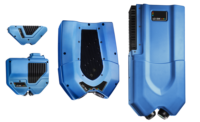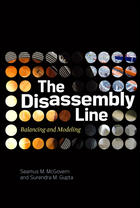Have you heard of Line Confocal Imaging (LCI)? Perhaps not, since the technology is relatively new to the already high-tech, high-resolution 3D measurement industry. Companies like Axiom Optics are dipping their toes in the water with STIL’s line of noncontact, chromatic confocal sensors. These sensors offer a wide choice of measuring ranges and work on all materials (metals, glass, semiconductor, plastic, ceramics, paper, fabrics, rubber, wood, polymer, etc.), among other benefits like a high repetition rate (up to 2000 lines/s) and high axial resolution (down to 2nm in distance mode along Z-axis).
Meanwhile, FocalSpec, a supplier of optical 3D surface measurement systems with sub-micron level resolution, recently announced the offering of their 3D LCI sensors to systems integrators and automation providers as a way to, as they put it, “further enhance the ability to respond to the demanding marketplace.”
The basics
LCI sensors cater to a broad scope of noncontact optical measurement applications, including 3D topography, tomography of transparent materials, and surface micro profile measurements, as well as determining film thickness, dimensions, or distances. The robust systems perform in practical manufacturing conditions, with no moving parts and a high tolerance for dust and vibrations. Signal processing is performed by in-built capability located inside the sensors, which greatly reduces the burden on other system components and allows for continuous on-line operation, even on high-speed production lines. This enables the quick and easy integration of LCI sensors for quality control on-line, though the sensors also can be implemented as separate items or as part of offline scanning systems.
What’s new
Laser scanning, the most frequently used method for 3D measuring, is capable of nearly identical accuracy and speeds as LCI. What it lacks, however, is the ability to measure transparent or shiny surfaces, or a combination of the two.
“One of the perks of LCI is that it can even detect separate layers in the scannable material, as long they have separate refraction indexes,” Sauli Törmälä, president of FocalSpec, explains. “Speckle noise, which is a problem with laser scanning, is nonexistent when LCI is utilized.”
For LCI, the applications are plentiful and growing. In a recent study performed by the Tampere University of Technology in Finland, where FocalSpec is based, LCI was successfully used in preventing surface melt fracture in polymer cast film manufacturing. LCI also can be used in manufacturing to ensure a homogenous extrusion process, or to produce medical equipment, like medical tubes.
Besides being versatile, LCI sensors are fast and highly accurate. They use a measurement profile line that records 2048 3D raw data measurement points simultaneously. The technology also allows the profiler to measure surface roughness at line speeds of up to 150 meters per minute, and scan moving cable surfaces at the rate of 250 measurements per second. In addition, FocalSpec has developed a specific profiler for measuring online roughness of flat surfaces that are dark matte, glossy, or transparent.
What’s changed
According to FocalSpec sales manager Juha Säily, an important step for many industries was when noncontact laser triangulation sensors for scanning 3D features of subjects became available in the marketplace. “Laser technology hasn’t changed much,” Säily points out, “except the sensors have become smaller and their speeds have increased.”
Nonetheless, more modern applications that include a combination of different material types, miniaturization of parts, higher production speeds, and different tolerance requirements—not to mention the more frequent use of glossy polymer, glass, and metal materials in many products—has presented a difficult challenge for many suppliers of traditional laser technologies as they struggle to keep up with the new developments.
But fortunately, as Säily describes, new 3D sensor inventions are being produced and commercialized to fill the gap where old methods don’t work.
“There are 3D metrology needs that traditional measurement methods cannot satisfy,” Säily explains. “There are fast measurement methods, but they are limited to ‘easy’ surfaces and don’t offer good resolution. There are high-resolution measurement methods, but they are very slow and not suitable for in-production use.”
LCI, however, offers all of the key advantages. The sensors are fast, high-resolution, and capable of measuring a wide spectrum of challenging surfaces and materials.
What’s next
In the area of high-speed, high-resolution 3D sensors, Säily says he’s noticed that LCI has been causing quite a stir among end users, system integrators, and automation providers alike for its uncanny ability to provide 3D measurement at sub-micron resolution and “speeds the competition cannot match.” He adds that it’s something of which his “small, young company” is especially proud.
And when it comes to the future of this emerging technology, Säily is equally assured.
“I expect LCI sensors to evolve in a similar fashion as laser triangulation sensors have done in the past,” Säily says. “They will become smaller, lighter, faster, and easier to use and program.”





